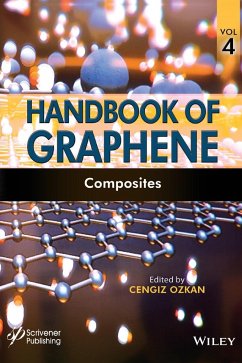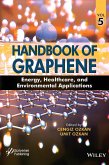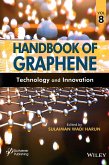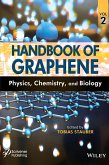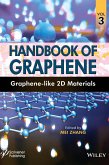This unique multidisciplinary 8-volume set focuses on the emerging issues concerning graphene materials and provides a shared platform for both researcher and industry. The Handbook of Graphene comprises 140 chapters from world renowned experts and presents in a unique eight-volume format covering all aspects relating to graphene--its development, synthesis, application techniques, and integration methods; its modification and functionalization; its characterization tools and related 2D materials; physical, chemical, and biological studies of graphene and related 2D materials; graphene composites; use of graphene in energy, healthcare, and environmental applications (electronics, photonics, spintronics, bioelectronics and optoelectronics, photovoltaics, energy storage, fuel cells and hydrogen storage, and graphene-based devices); its large-scale production and characterization; as well as graphene-related 2D material innovations and their commercialization. Volume 4 is solely focused on selected topics in graphene composites materials and provides an overview of the multitude of different research directions that are currently being taken at the international level. Some of the important topics include but are not limited to: Graphene composites; graphene reinforced advanced composite materials; graphene based composites materials; interfacial mechanical properties of graphene/substrate system: measuring method and experimental analysis; graphene based ceramic composites: processing and applications; ab-initio design of 2d and 3d graphene-based nanostructure; graphene based composite nanostructures: synthesis, properties and applications; graphene-based composites with shape memory effect-properties, applications and future perspectives; graphene-based scroll structures: optical characterization and its application in resistive switching memory devices fabrication and properties of copper-graphene composites; graphene-metal oxide composite as anode materials in li ion batteries; graphene/tio2 nanocomposites: synthesis routes, characterization, and solar cell applications role of reduced graphene oxide nanosheets composition with zno nanostructures in gas sensing properties functional graphene oxide/epoxy nanocomposites coatings with enhanced protection properties; supramolecular graphene-based systems for drug delivery; polymeric nanocomposites including graphene nanoplatelets; graphene oxide- polyacrylamide composites: optical and mechanical characterizations; synthesis, characterization and applications of polymer/graphene oxide composites materials. Audience This book is intended for researchers and graduate students in the field of advanced materials and graphene in particular, who are currently investigating the fundamental properties of this material and its applications in micro- and nanotechnologies.

